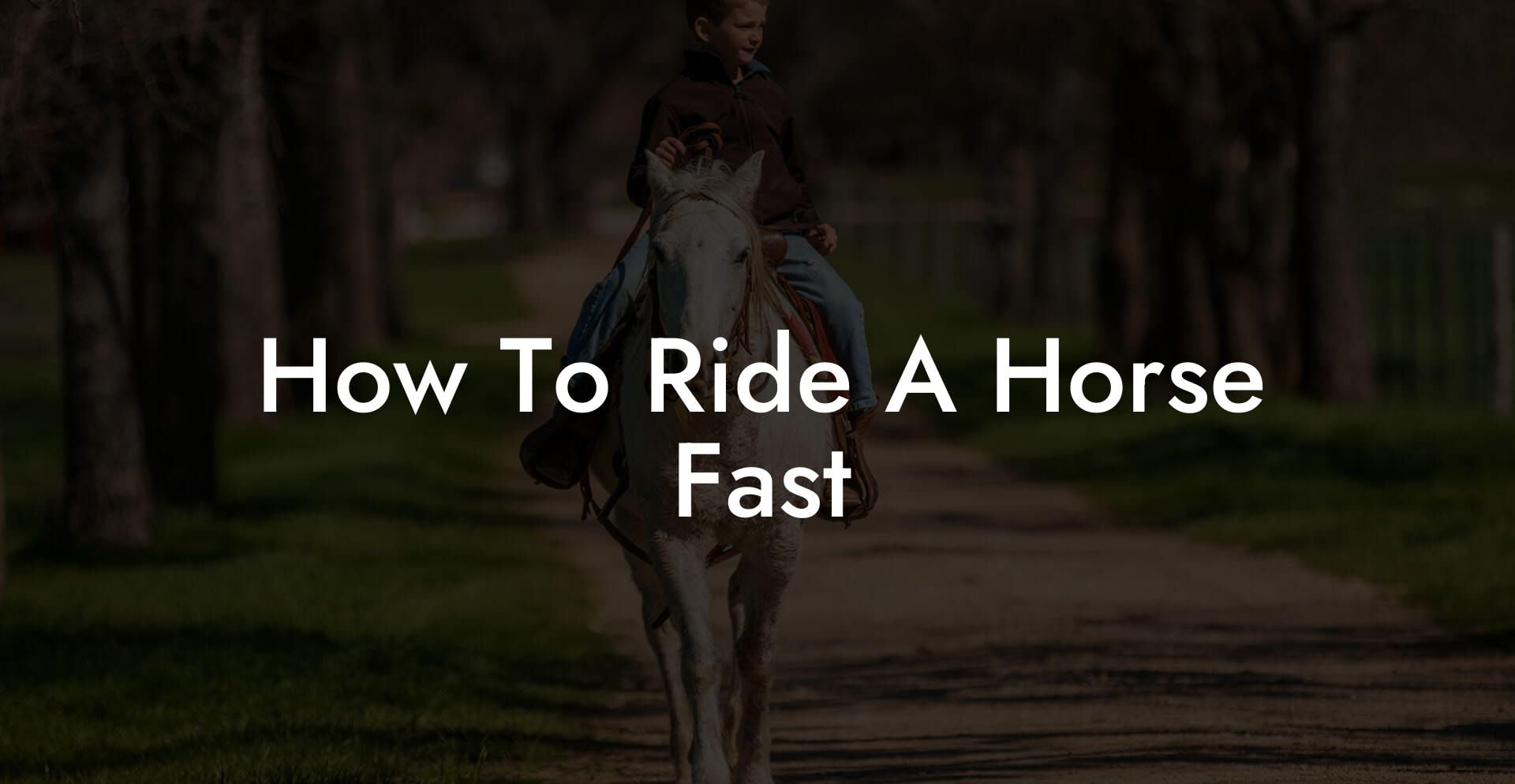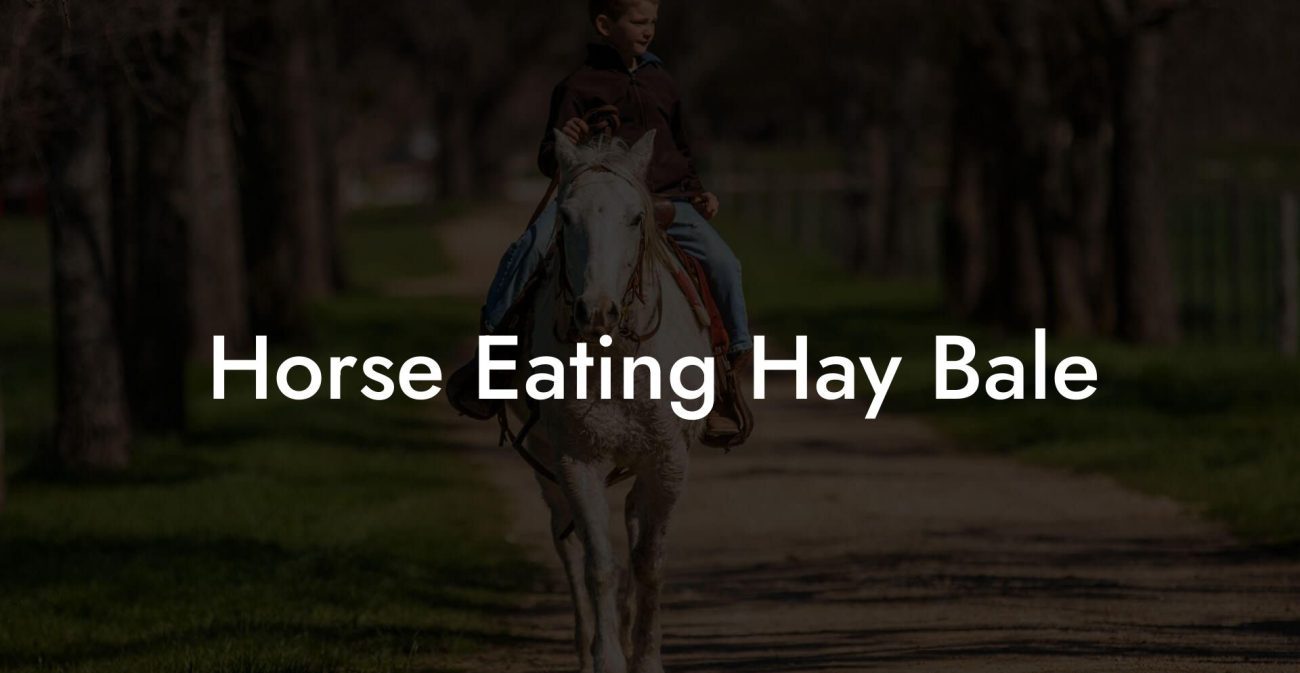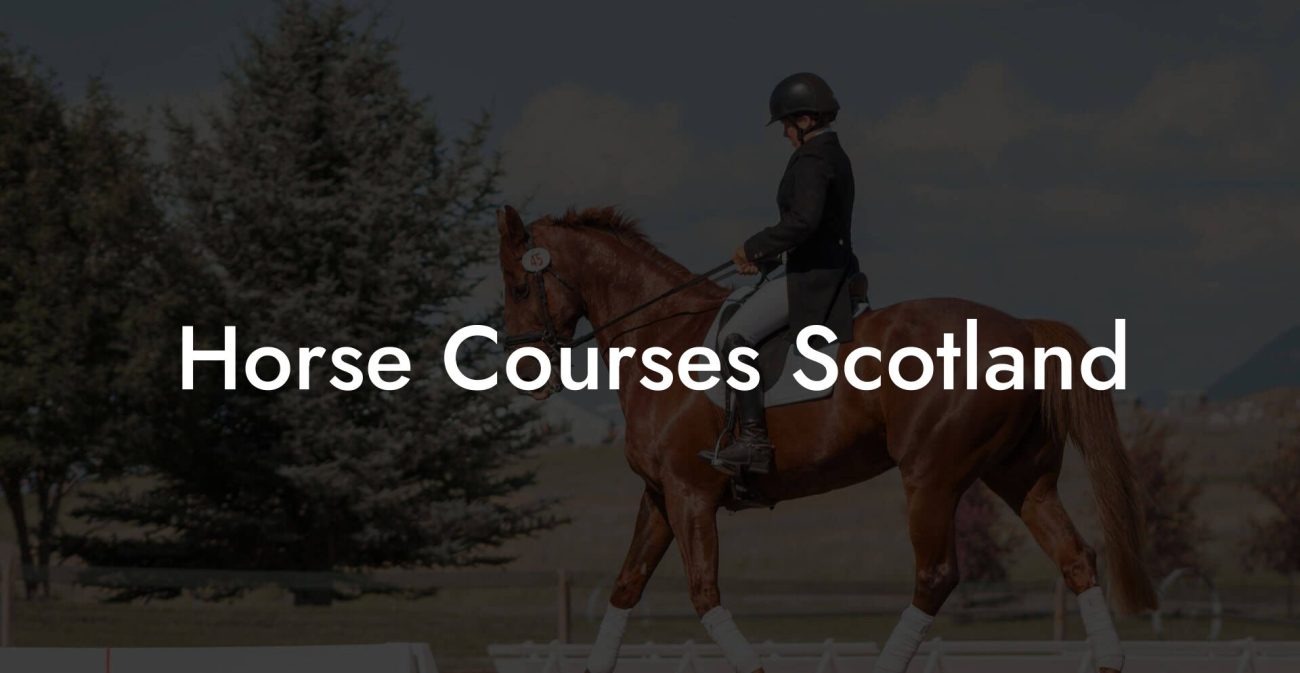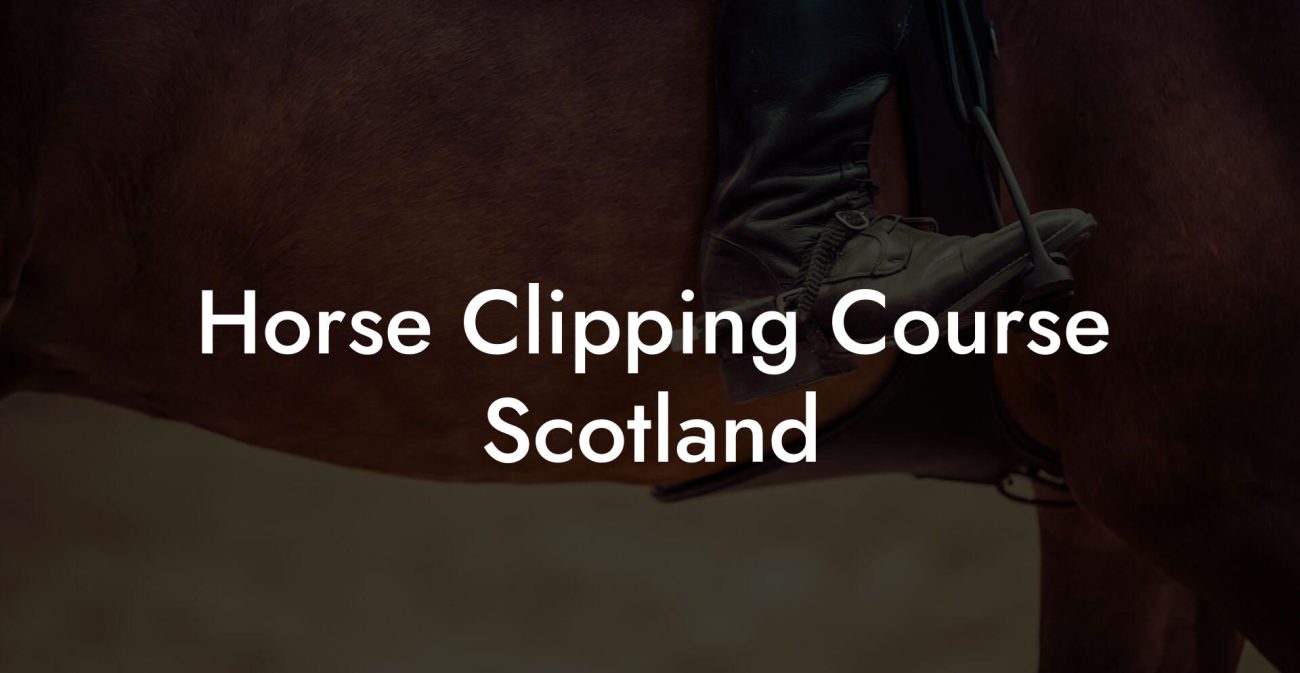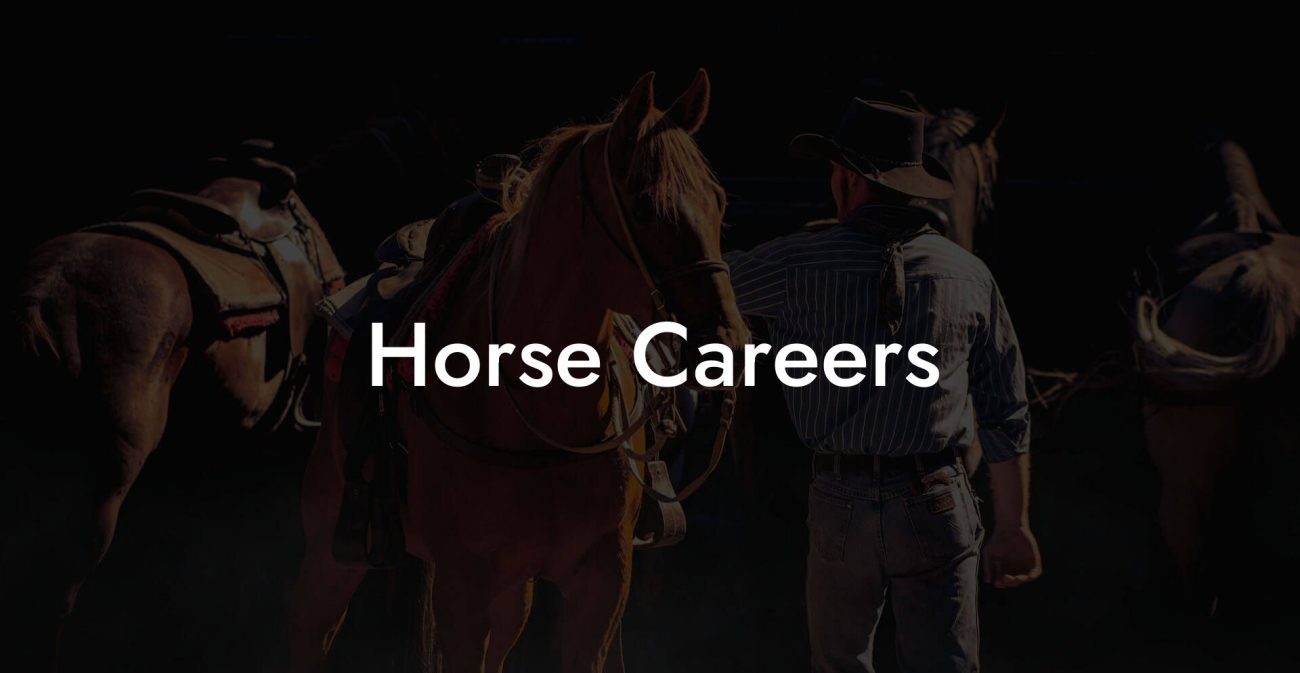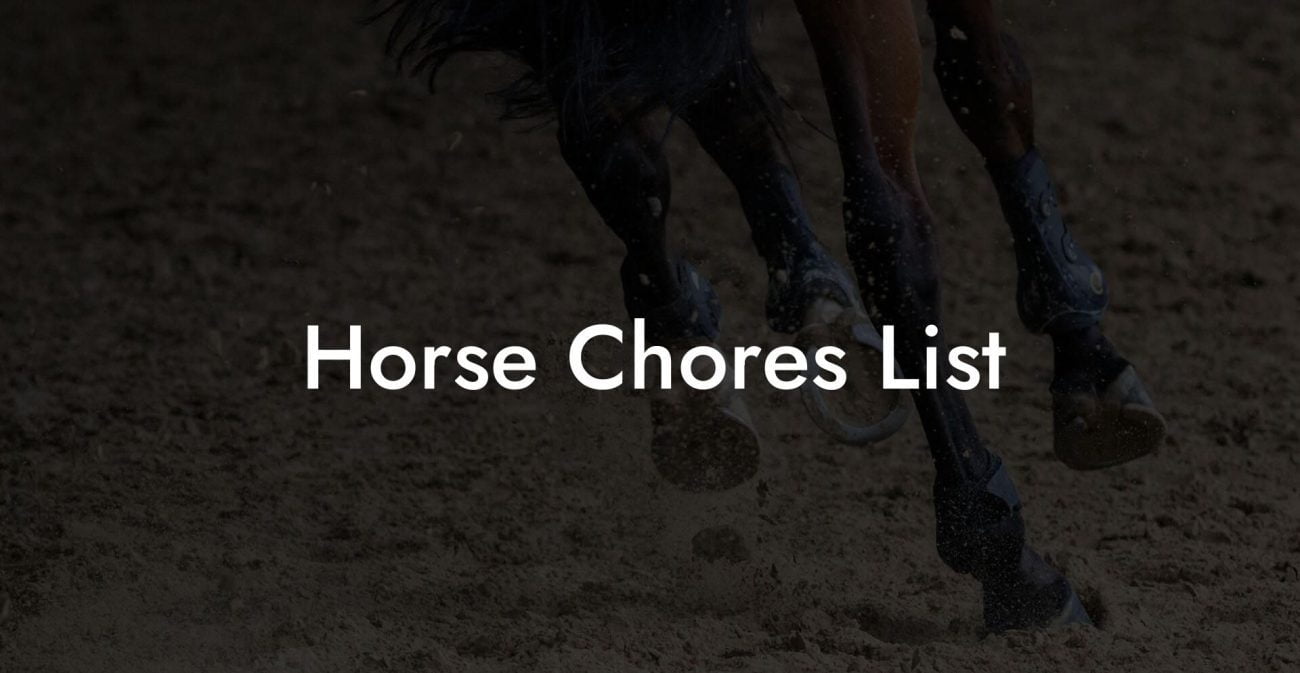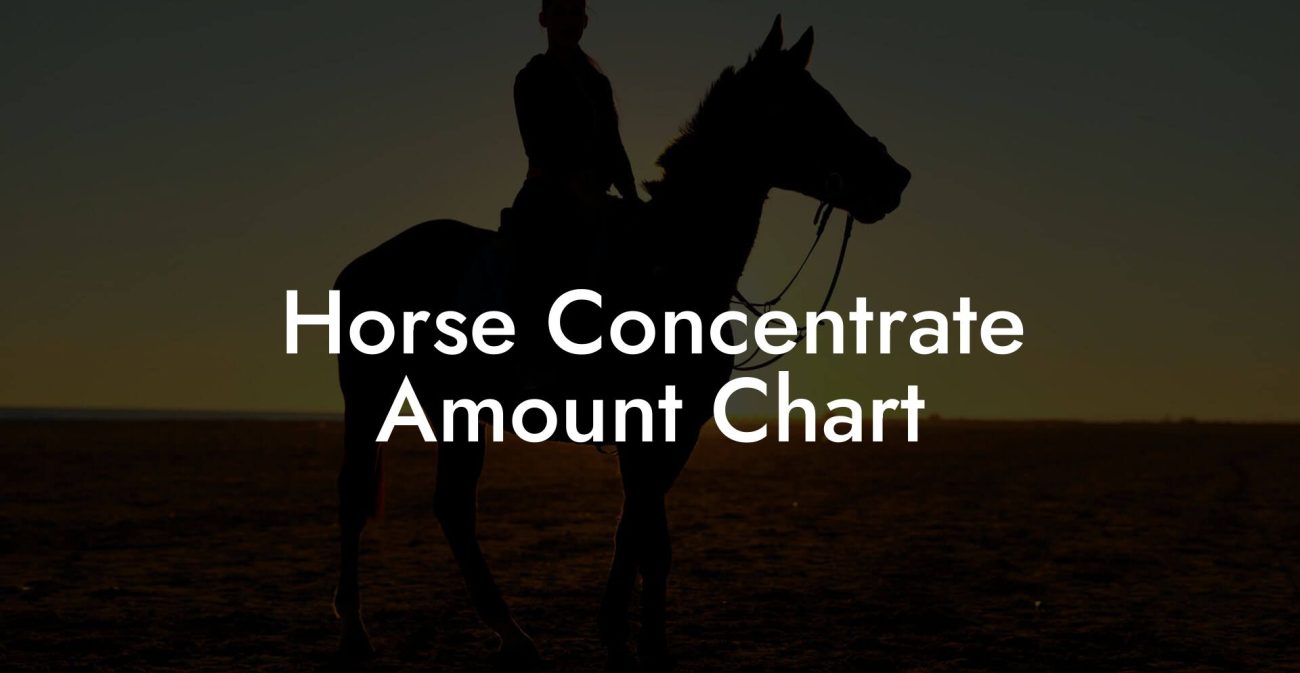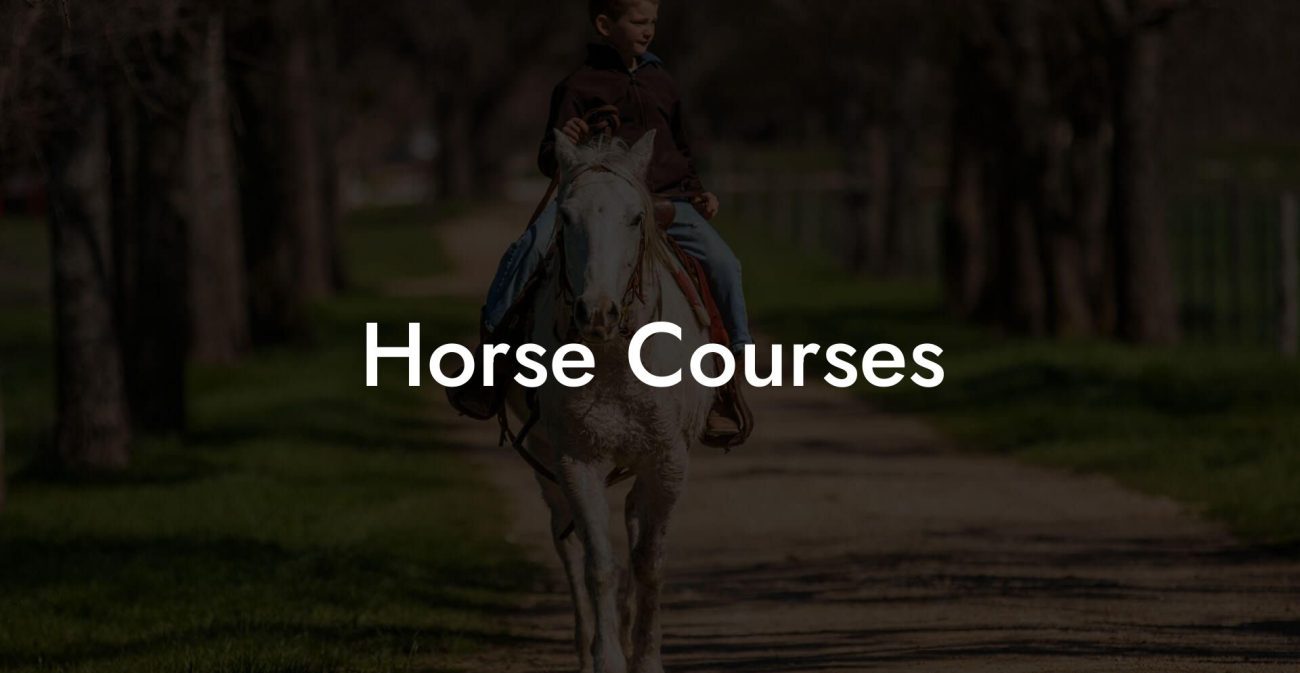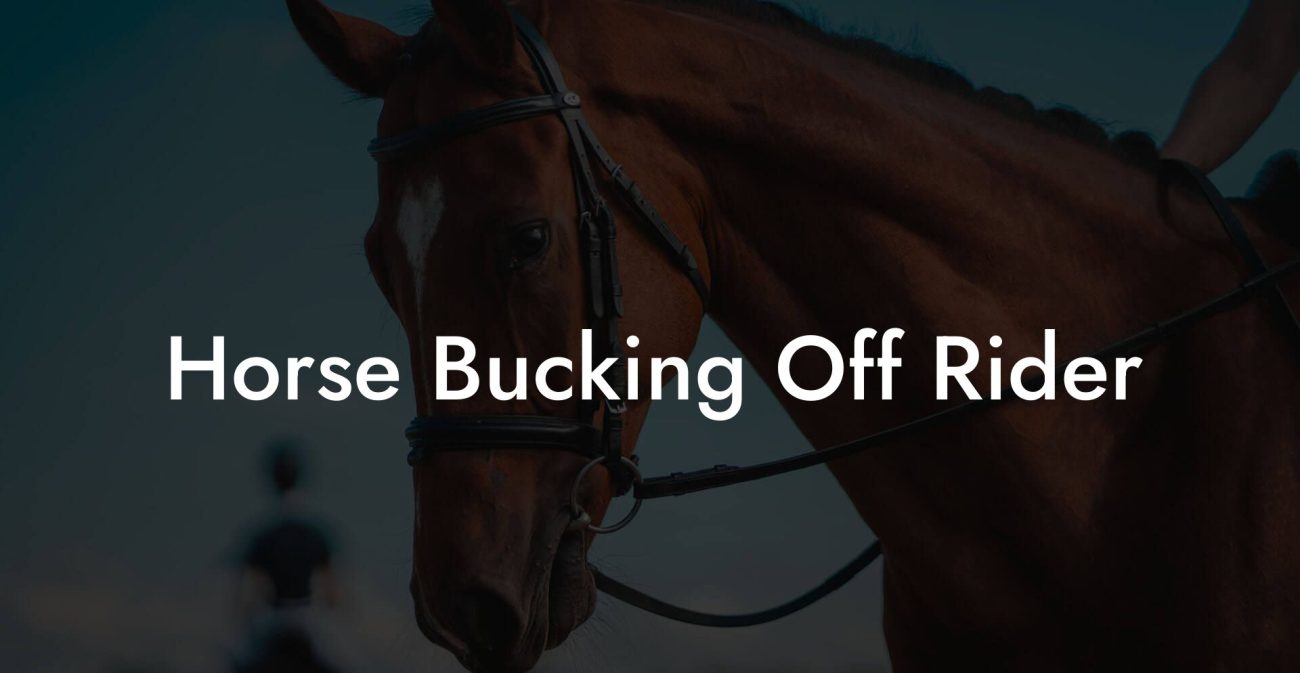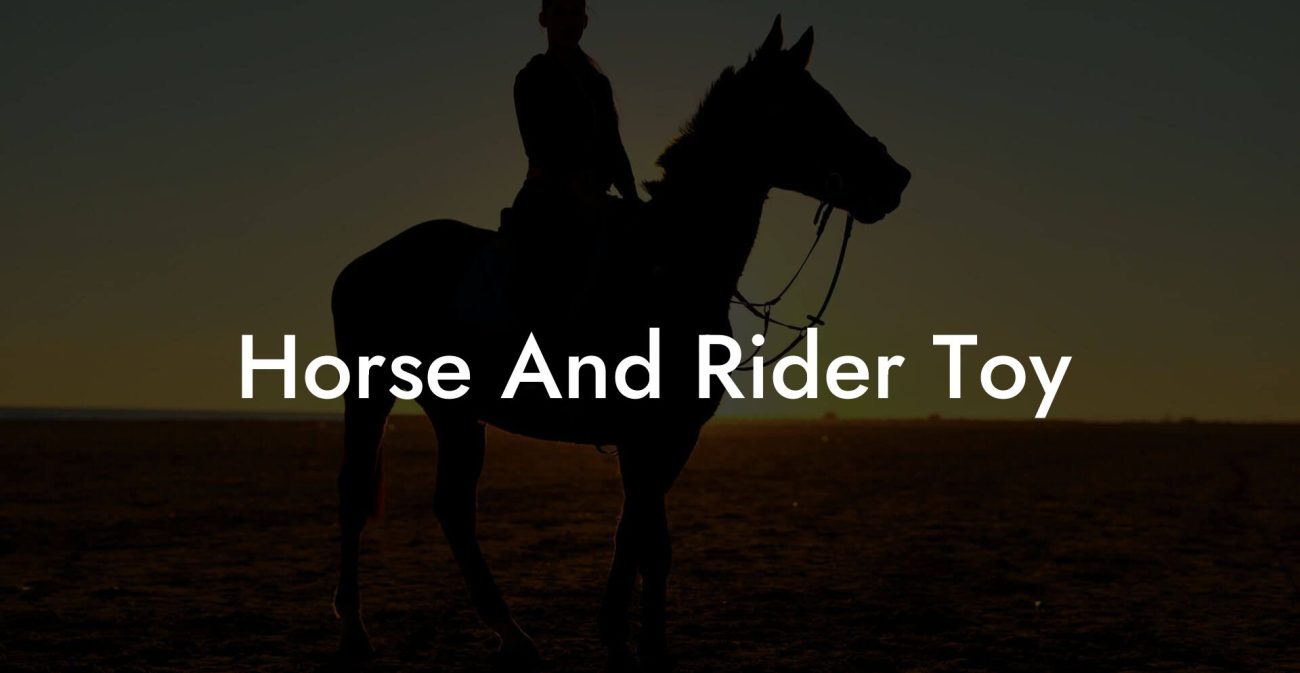Buckle up, because riding a horse fast isn’t just about leaning into the wind and screaming “Yeehaw!”, it’s a full-on adventure that blends adrenaline, horse care mastery, and a dope blend of technique and style. Whether you’re a Gen-Z daredevil or a millennial thrill-seeker, get ready to dive into the world where equestrian dreams meet high-speed passion, all while ensuring your trusty steed stays in peak condition.
Quick Links to Useful Sections
- Understanding the Thrill: Why Riding Fast is More Than Just Speed
- Equine Care Essentials: Keeping Your Steed in Tip-Top Shape
- The Importance of Routine Grooming
- Feeding for Performance
- Regular Veterinary Visits and Dental Care
- Exercise and Conditioning
- Mastering Rider Techniques: From Basics to Pro-Level Tips
- Perfect Posture and Relaxed Form
- Effective Use of the Reins
- Body Language and Communication
- Proper Gear for Fast Riding: Saddles, Boots, and More
- The Perfect Saddle
- Riding Boots and Helmets
- Additional Safety Equipment
- Training and Exercise for Maximum Speed
- Interval Training and Sprints for the Horse
- Strength and Conditioning for the Rider
- Cross-Training for Synergy
- Tips and Tricks for Extreme Rider Confidence
- Common Mistakes to Avoid When Riding Fast
- Over-Reliance on Speed
- Ignoring Regular Equine Care
- Poor Communication
- Neglecting Warm-Up and Cool-Down
- Integrating Advanced Techniques: Trail Riding vs. Track Racing
- Resources and Community Support: Your Next Steps
- Frequently Asked Questions About Riding Fast and Equine Care
- Embrace the Ride: Your Path to Equestrian Speed and Care
Understanding the Thrill: Why Riding Fast is More Than Just Speed
At first glance, riding fast might seem like nothing more than a race against time. But honestly, it’s so much more, a blend of strategy, intuition, and a deep bond with your horse that transforms every ride into a heart-pounding escapade. When you’re racing across open fields or cutting through dirt trails, you’re not just riding; you’re participating in an ancient dance between human and equine.
The thrill of fast riding is built on several cores: precision, agility, and the magic of synchronicity. Successful high-speed rides require understanding your horse’s strengths, balancing on a moving target, and making split-second decisions that ensure both rider and animal remain safe and in control. It’s a dynamic sport that challenges your focus, reflexes, and even creativity.
But remember, fast riding doesn’t happen by magic. It takes dedication, proper training, and a healthy dose of passion for both speed and care. If you want to be the rider who can claim the wind as your best friend, you need to master both the art of rapid riding and the science of equine wellness.
Equine Care Essentials: Keeping Your Steed in Tip-Top Shape
Before you even think about hitting full throttle on horseback, it’s crucial to remember that your speedy ride depends on one major partner: your horse. Taking care of your equine companion is the bedrock of sustainable high-speed riding. After all, a well-cared-for horse is not only happier but also healthier, stronger, and more agile.
From proper grooming and nutrition to routine veterinary check-ups and consistent training, equine care encompasses a holistic approach that looks at the overall well-being of your animal. Here’s how to ensure your steed is always ready to break into a gallop:
The Importance of Routine Grooming
Grooming is much more than a beauty regimen, it’s a vital part of your horse’s health. Regular brushing removes dirt, reduces the risk of skin infections, and stimulates blood circulation. Moreover, inspecting your horse during grooming sessions can help you catch cuts, sores, or early signs of illness before they develop into something more problematic.
Feeding for Performance
Like any elite athlete, your horse needs the right fuel to perform at its best. A balanced, nutrient-dense diet rich in high-quality forage, grains, and essential supplements ensures that your horse has the energy reserves needed for those bursts of speed. Hydration is equally critical, always keeping fresh water available is a must.
Regular Veterinary Visits and Dental Care
Just like us, horses require check-ups. Regular visits to the veterinarian can help maintain overall health, spot potential issues early, and optimize your horse’s performance. Don’t forget dental care, horses need periodic teeth cleaning to prevent pain and complications while feeding.
Exercise and Conditioning
Maintaining your horse’s fitness is akin to having a consistent gym routine for you. Conditioning exercises, varied training sessions, and ample turnout time enable your horse to build muscle, increase endurance, and boost agility. An active horse is a happy and fast horse.
Integrating these equine care essentials into your routine not only improves your horse’s performance but also strengthens the bond between you and your four-legged partner, a bond that is the lifeblood of every high-speed ride.
Mastering Rider Techniques: From Basics to Pro-Level Tips
Speed isn’t just about the horse; it’s also about your riding technique. Defined posture, quick reflexes, and a confident yet adaptive riding style are critical when you’re pushing the limits on a fast ride.
The first step to mastering these techniques is understanding the principles behind balance and control. Riding fast means you frequently experience shifts in momentum, and your body must be prepared to adapt. Practice exercises like core stabilization, balance drills, and posture alignment sessions. These not only improve your riding skills but also help reduce fatigue during long rides.
Perfect Posture and Relaxed Form
Maintaining an upright, relaxed posture is the secret sauce when riding at high speeds. Avoid a rigid stance, imagine absorbing the motion in your body like a shock absorber. Slightly bent knees, an engaged core, and loose shoulders all contribute to a smoother ride. The key is to let your body move naturally with the motion of the horse.
Effective Use of the Reins
The reins are not just for steering; they’re your direct line of communication with your horse. Learning to use gentle yet firm signals through the reins allows you to guide your ride without startling your partner. It’s a delicate balance, too much pressure can confuse or frighten your horse, while too little might not give clear directives when you need maximum speed.
Body Language and Communication
High-speed riding requires an almost telepathic connection with your horse. Your body language, facial expressions, and even subtle shifts in weight can send powerful signals. By honing this non-verbal language, you can effectively communicate your intentions and create an environment of mutual trust.
Ultimately, developing advanced riding techniques comes down to practice, patience, and a willingness to learn from both successes and mistakes. Every ride is a lesson, and with time, you’ll find your unique style that marries speed with safety.
Proper Gear for Fast Riding: Saddles, Boots, and More
When it comes to riding fast, your gear is as important as your skills, or even your horse’s health. Wearing the right equipment not only enhances performance but also keeps both you and your horse safe. Here’s a rundown of the essential gear and why each piece matters:
The Perfect Saddle
A high-quality, performance-oriented saddle provides the foundation for every ride. Look for a design that offers excellent balance, proper weight distribution, and comfort for long rides. Modern saddles come with innovative materials that are lightweight yet durable, ensuring you’re not weighing your horse down during speed bursts.
Riding Boots and Helmets
Safety should never be sacrificed in the pursuit of speed. Invest in a pair of riding boots with good ankle support and non-slip soles. Equally important is a well-fitted helmet, which is non-negotiable when riding at high speeds. Today’s helmets come in sleek designs that combine protection with style, perfect for the modern rider.
Additional Safety Equipment
Depending on the conditions and the terrain, you may also need additional gear such as body protectors, gloves, and riding vests. These help reduce the risk of injury, especially when navigating challenging courses or during competitive events.
By investing in the right gear, you’re setting the stage for a safe and exhilarating ride. It’s not enough to be fast, you have to be smart about it.
Training and Exercise for Maximum Speed
Training for speed is a two-pronged approach: you need to condition both your horse and yourself. Think of it as a partnership where both members of the team are constantly evolving toward peak performance.
Start with a thorough warm-up routine that gets the blood pumping in both you and your steed. A few minutes of light trotting and dynamic stretches set the stage for more intense work. For your horse, incorporate interval training that gradually builds speed and endurance. And for you, exercises that enhance balance, flexibility, and cardiovascular health are key.
Interval Training and Sprints for the Horse
Just as sprinters incorporate short, high-intensity bursts into their training, horses also benefit from interval work. Short sprints followed by periods of recovery condition the horse’s muscles and cardiovascular system for sustained bursts of speed. This type of training builds the foundation for quick, explosive movements when you need them most.
Strength and Conditioning for the Rider
You’re the one holding the reins, so your own physical fitness is crucial. Incorporate strength training exercises focusing on your core, legs, and arms. Activities like squats, lunges, and yoga not only build strength but also improve flexibility and balance, essential when riding at high speeds.
Cross-Training for Synergy
Variety is the spice of life and training alike. Mix in cross-training activities such as cycling, swimming, or even dance workouts to boost overall stamina and coordination. The more diverse your fitness routine, the better prepared you’ll be to handle the dynamic demands of fast riding.
Training smart, both for you and your steed, means you’re prepared for that split-second moment when the need for speed strikes. Consistent, targeted workouts help build the physical and mental resilience necessary for truly electrifying rides.
Tips and Tricks for Extreme Rider Confidence
Confidence isn’t just an added bonus, it’s the secret ingredient that turns a good ride into a great one. When you’re riding fast, your mindset becomes as critical as your technique. Confidence comes from preparation, a deep connection with your horse, and a willingness to push boundaries while respecting the limits of your pair.
Here are some pro tips to boost your riding confidence:
- Visualization: Spend a few moments before your ride imagining every detail, the sound of hooves on the ground, the rush of wind, and the unmistakable feeling of control. Visualization can prime your mind for peak performance.
- Practice Controlled Breakaways: Try bursts of controlled speed during your everyday rides. Not only does this build muscle memory, but it also helps you get used to the sensations of moving fast.
- Celebrate Small Wins: Whether it’s mastering a new technique or noticing improvements in your horse’s condition, celebrate your progress. Every small success builds your overall confidence.
- Stay Informed: The more you know about your sport, from the latest riding techniques to innovative equine nutrition, the more empowered you feel. Knowledge is a powerful confidence booster.
- Wear Your Gear Proudly: There’s something inherently empowering about gearing up in high-quality equipment. When you look good, you feel good, and that translates directly into your riding performance.
Embrace these tips and watch how your confidence grows with every ride, turning what might have once been a nerve-wracking sprint into an exhilarating freedom ride.
Common Mistakes to Avoid When Riding Fast
No matter how seasoned you are or how many hours you’ve clocked in the saddle, even the best riders slip up sometimes. Recognizing common pitfalls and knowing how to avoid them can mean the difference between a triumphant ride and a frustrating setback.
Over-Reliance on Speed
One of the most common missteps is focusing too much on speed rather than technique. When you try to push your horse beyond its limits, not only do you risk injury, but you can also disrupt the natural rhythm that makes fast riding so rewarding.
Ignoring Regular Equine Care
It might be tempting to spend all your time perfecting your riding skills, but don’t forget that your horse needs consistent care. Skipping routines like grooming, proper feeding, or regular vet visits will eventually slow both of you down, and that’s not the kind of delay you want.
Poor Communication
If you’re not in tune with your horse’s cues, you’re bound to encounter hiccups. Overusing the reins or sending mixed signals can confuse your horse, making fast riding more challenging and even dangerous.
Neglecting Warm-Up and Cool-Down
Rushing into a high-speed ride without proper warm-up exercises is a common mistake that can lead to strains or injuries. Likewise, a lack of cool-down routines can leave your muscles, and your horse’s, stiff and sore.
By steering clear of these pitfalls and embracing a balanced approach to both speed and care, you’ll increase your ride’s efficiency, safety, and overall enjoyment.
Integrating Advanced Techniques: Trail Riding vs. Track Racing
Riding fast isn’t one-size-fits-all. Depending on your environment and goals, your approach might vary dramatically. Two popular styles, trail riding and track racing, require different techniques, preparations, and mindsets.
Trail riding at high speeds is all about adapting to natural terrain. The uneven ground, unexpected obstacles, and winding paths call for quick decision-making and a keen sense of your surroundings. Use your body and reins as if you’re painting a path through nature, fluid, reactive, and in sync with every twist and turn.
In contrast, track racing focuses on maximizing speed in a controlled environment. Here, precision is paramount. Every lean, every shift of your weight, comes into play as you try to shave seconds off your time. Track riders often spend hours training to perfect their technique in a highly specialized setting, where the slightest miscalculation can cost you dearly.
Both disciplines teach valuable lessons. Trail riding enhances your ability to handle unexpected challenges, fostering adaptability and resilience. Track racing, meanwhile, refines your precision and focus, turning riding into an art form where every detail matters. Consider exploring both styles to develop a comprehensive riding skill set that encompasses the best of each world.
Resources and Community Support: Your Next Steps
The journey to mastering fast riding and equine care is best traveled with a supportive community. There are countless resources, from online forums and social media groups to local riding clubs and specialized training camps, that can help you refine your skills, share experiences, and celebrate victories.
Consider joining an equestrian community or forum where tips are exchanged, questions are welcomed, and every member has a passion for both riding and taking top-notch care of their horses. Platforms like Instagram and TikTok are brimming with influencers who share real-life riding experiences, quick tips, and behind-the-scenes insights from the world of high-speed equestrian sports.
In addition to online communities, many local stables and riding academies offer workshops and clinics aimed at improving both your riding technique and your horse care knowledge. Look out for events that combine hands-on training with expert lectures on nutrition, grooming, and equine health. Getting involved in these communities not only boosts your riding skills but also connects you with people who share your enthusiasm for the sport.
Finally, don’t hesitate to seek advice from professionals. Experienced trainers, veterinarians, and seasoned riders can provide personalized guidance tailored to your specific needs, helping you grow and ride confidently, whether in a local arena or on a competitive track.
Frequently Asked Questions About Riding Fast and Equine Care
Curious about the ins and outs of riding fast and keeping your horse in prime condition? Here are some questions we get all the time, along with clear answers to help guide you on your journey.
1. What are the key elements of riding fast safely?
Riding fast safely requires a mix of proper training, excellent communication with your horse, appropriate gear (like a quality saddle and helmet), and a deep understanding of both your and your horse’s physical limits. Regular practice and conditioning are also vital to maintain balance and control.
2. How important is equine care in high-speed riding?
Equine care is absolutely crucial. A healthy, well-cared-for horse not only performs better but also has a lower risk of injury. Routine grooming, proper nutrition, regular vet check-ups, and conditioning exercises all contribute to maintaining your horse’s health, which in turn supports faster, safer rides.
3. What should I focus on to improve my riding technique for speed?
Focus on developing a stable core, maintaining proper posture, and refining your use of the reins for subtle communication. Additionally, practicing balance drills and taking lessons from experienced riders can drastically improve your technique.
4. Are there specific training methods for conditioning a horse for speed?
Yes, interval training, sprint drills, and a mix of steady warm-up and cool-down exercises are essential. These training methods build both muscle strength and cardiovascular endurance, key factors in achieving maximum speed without overstraining your horse.
5. What type of gear is non-negotiable for riding fast?
A well-fitting saddle, quality riding boots, and an approved helmet are the absolute essentials. Depending on the terrain and your personal preference, you might also invest in additional safety gear like body protectors and gloves.
6. How can I boost my confidence as a fast rider?
Boost your confidence through consistent practice, visualization techniques, and by celebrating small wins. Joining a community of riders and learning from expert trainers can also elevate your riding skills and self-assurance.
7. What common mistakes should I avoid when attempting fast rides?
Avoid over-relying on speed at the expense of control, skipping equine care routines, and neglecting proper warm-up and cool-down sessions. Communication with your horse is also key, mixed signals can lead to unsafe outcomes.
8. Can I develop as a fast rider on my own, or do I need professional guidance?
While self-practice is important, professional guidance can accelerate your progress and teach you techniques that you might not learn on your own. Many riders benefit from structured lessons and the insights of experienced trainers to refine their skills.
9. How do trail riding and track racing differ in their approach?
Trail riding requires adaptability to varying terrain, while track racing emphasizes precision and maximum speed in a controlled setting. Each style demands a unique set of techniques and training regimes, so your goals should dictate your focus.
10. Is there a community or resource where I can learn more about riding fast and horse care?
Absolutely! Online platforms like Instagram, TikTok, and specialized equestrian forums are fantastic resources. Additionally, local riding clubs, stables, and training clinics offer hands-on opportunities and expert advice.
Embrace the Ride: Your Path to Equestrian Speed and Care
Every fast ride is a journey, not just across landscapes but into the very heart of equestrian excellence. The art of riding a horse fast is deeply intertwined with a commitment to comprehensive care, thoughtful training, and an unbreakable bond with your animal. When these elements come together, riding transforms from a hobby into an exhilarating lifestyle.
So, take pride in every moment of preparation, from the early morning grooming sessions and meticulous gear checks to the adrenaline-fueled bursts on the track or trail. Celebrate each successful ride, and if you stumble, know that every setback is just another opportunity to learn and grow.
The path to riding fast is paved with passion, persistence, and a commitment to excellence in both technique and horse care. Keep experimenting, keep learning, and always remember: every ride is a conversation between you and your horse. Respect that dialogue, trust in the process, and soon enough, you’ll discover that the thrill of speed comes naturally when both rider and steed are in perfect harmony.
Embrace the ride, and let your journey to equestrian speed and world-class care define not just your sporting prowess, but your lifelong connection with your magnificent partner in adventure.

